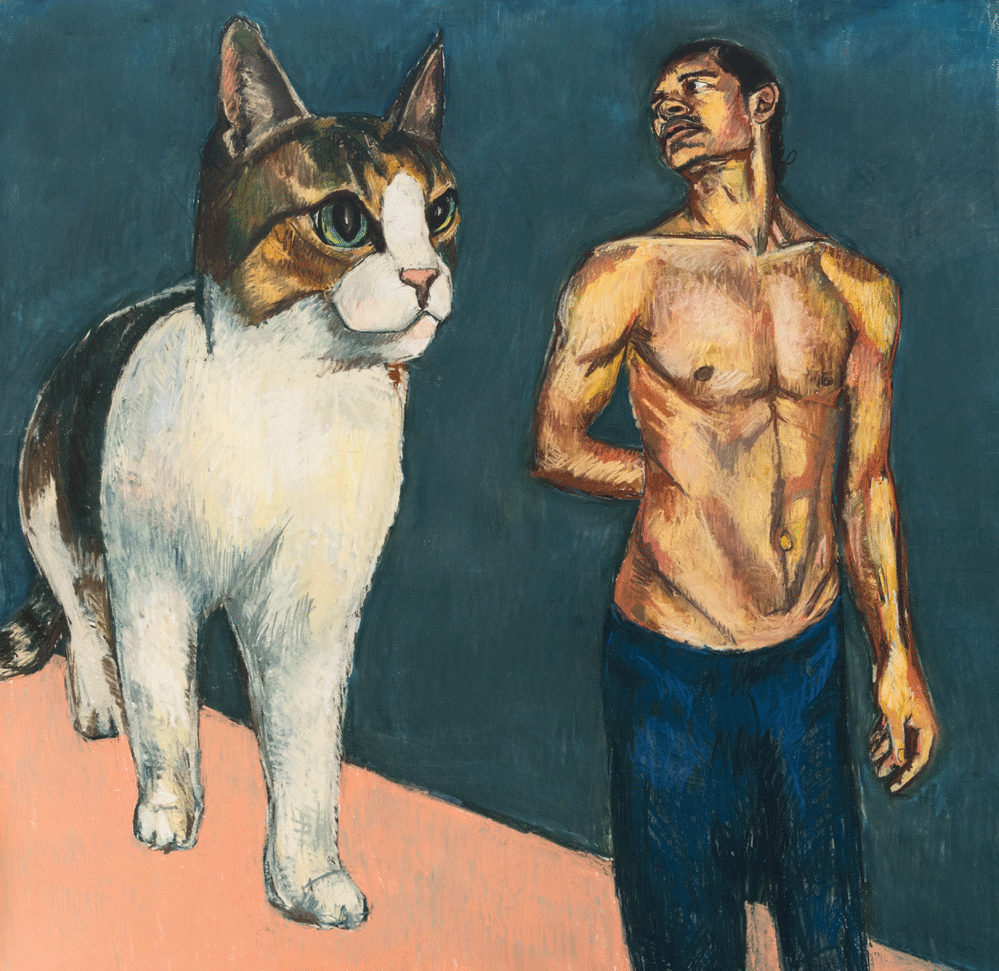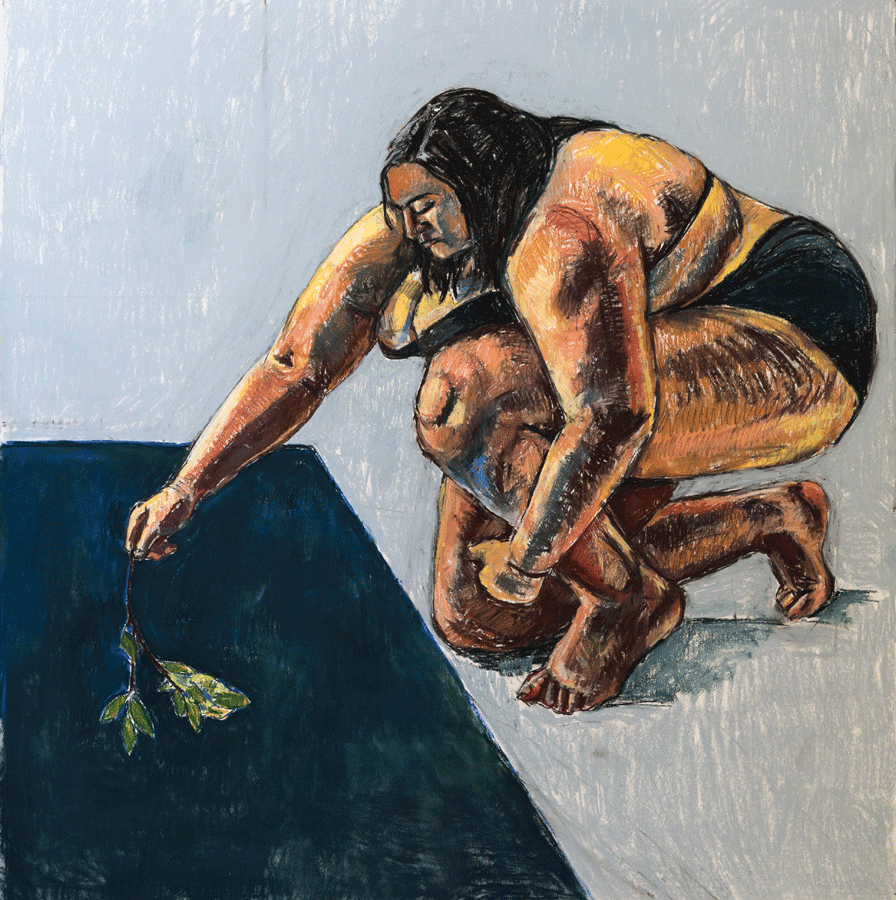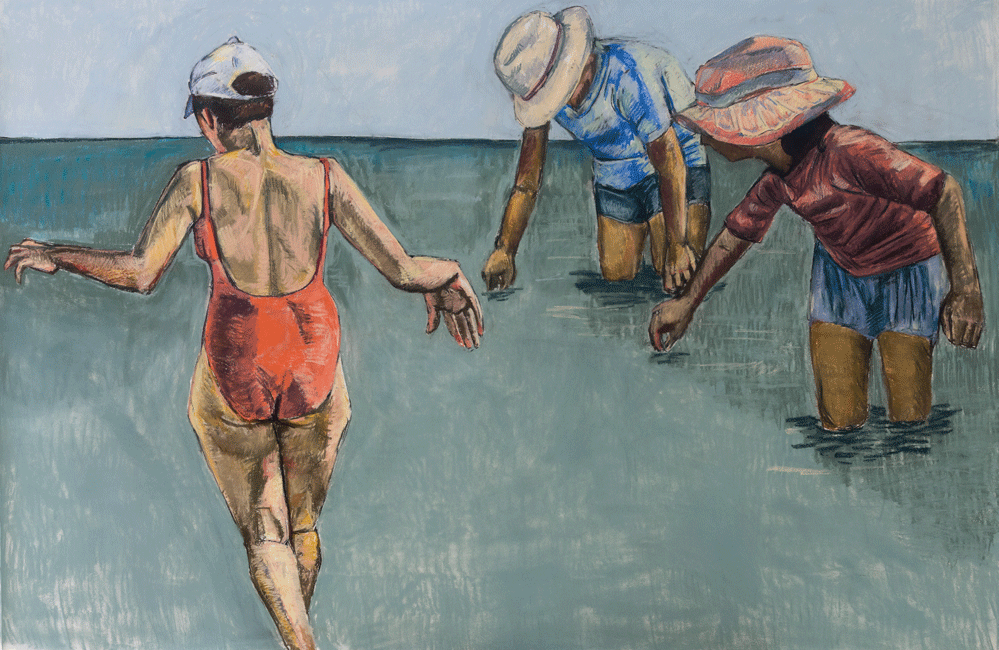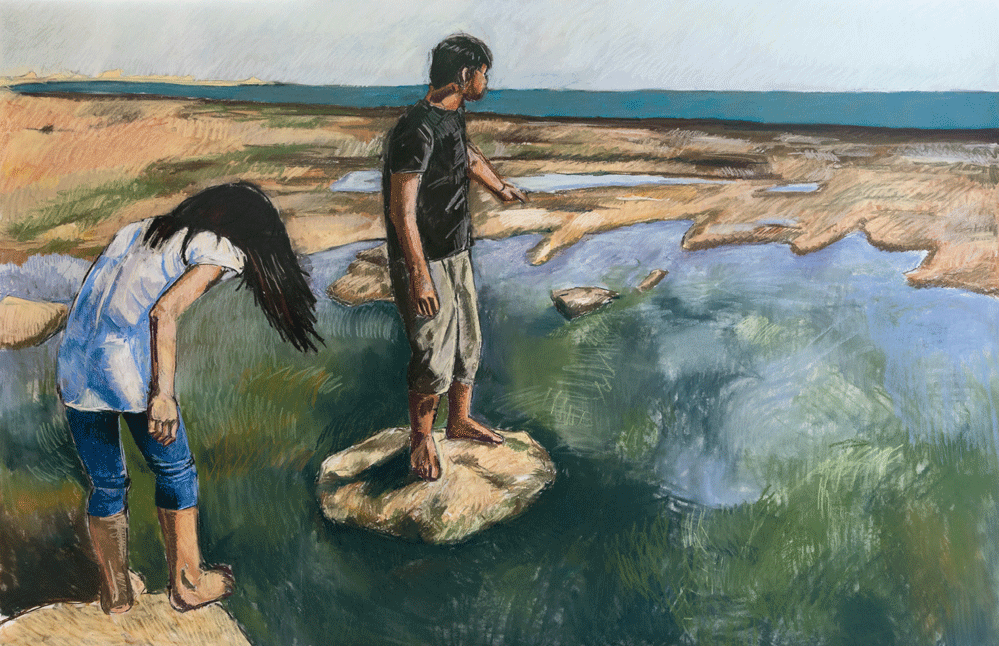Bold is Beautiful
By Nusrat Khawaja | Art Line | Published 6 years ago
Marium M Habib’s first ever solo show was held at Art Chowk Gallery. Titled Colossus & Friends, it introduced the viewer to strong figural depictions of humans and some cats.

Man with Cat
Most of Marium’s work is in large format, which compels the eye to take in the nearly life-sized figures, much like gazing at a still shot on a cinema screen.
Marium has mostly worked in chalk pastel on paper, with a few paintings rendered in oil on canvas. Drawing is a strong feature of her art and the pastels lend themselves well to the theatricality of her compositions, with their high contrasts and soft lights. She enjoys rendering unusual angles of body posture, often trapping her characters in the midst of movement. In ‘The Kids are Alright,’ two children are shown in strong three-quarterly posture, angled diagonally to the horizontal lines of the sea.
Many of the characters depicted in the work are known to Marium which makes the title – Colossus & Friends – a self-referential one. She says: “As my work is largely confessional, I use personal images I have collected over time as my source material. I abstract them slightly and use figures and symbols to invoke a psychological narrative as I explore identity, culture and gender.”

Colossus
These images are portrayed against a fairly minimal background (geometrically rendered in diagonal lines and two colours) because of which the physicality of the bodies is greatly emphasised. Taut and muscular as in ‘Man and Cat’ or fleshy and voluminous as in ‘Colossus,’ these bodies are expressions of Marium’s strong architectural perception of volume and space. Their earthy tones and unselfconscious stance create a casual informality. They are easy for the viewer to relate to and this echoes the artist’s own familiarity with them.
Another strong architectural construct is the manipulation of scale. Scale is an important relational principle that is defined by the ratio of one body to another. Again, in ‘Man and Cat’ the cat is disproportionately large with respect to the man. However, if one filters this apparent discordance of scale through the mindset of the artist, a different and more logical perspective becomes evident; that is the logic of size correlates with Marium’s personal engagement with the figures in question.

Do not Sleep, There are Snakes
Another scale explored in Marium’s work is that of time. She has painted an image of the millennia-old Venus of Willendorf figurine in a slightly larger than its actual size of 11 centimetres. She picks up this image and cleverly transforms it into a “real” person in ‘Pussy (cat) pussy (cat).’ This woman, in a diaphanous shift, with tousled hair, has immediacy and relatability. Marium has played with the ambiguity of time past and time present. She has convincingly bridged the abstracted way we look at an artefact from antiquity, and contrasted it with the judgements we make on body types.
The ‘Colossus,’ who features in the title of the series, is a bold rendition of a large, semi-nude woman who delicately dips a leafy twig into a dark, polygonal space. This dark space provides an element of mystery and a hint of psychology. The notion of self and other becomes an important determinant of how we assign value to our perceptions, not least when it comes to gender, and Marium explores these perceptual subjectivities in her art.

The Kids are Alright
The gaze of the viewer is also brought into question. The direct gaze of the figure in an artwork, looking out at the viewer, was a radical subversion of women’s sexual submissiveness. Manet’s ‘Olympia’ broke the norms of academic art and the painting remains a site for feminist critique of a nude woman’s sexual agency. Marium presents her own take in her version of ‘Olympia.’ The work is rendered in bold primary colors of red, yellow and blue. Her composition of a young woman with bananas is a provocative one. This young woman, like Manet’s archetypal ‘Olympia,’ does gaze directly at the viewer. However, unlike Manet’s ‘Olympia,’ she is not nude (she wears a T-shirt and track pants), nor is she dependent on the background context in order to claim self-definition.
Colossus and her friends have a powerful presence. Their bodies are their temples, but they do not demand worship.


